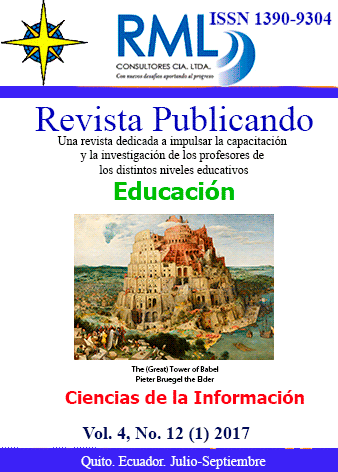Abstract
The present article examined the extent of construct validity of a final achievement test given to Ecuadorian university students of B1 level who study English as a Foreign Language. In order to obtain the data and analyse it, qualitative research methods and the interpretative paradigm led this investigation. A matrix based on Bachman and Palmer”™s framework (1996) was created to collect the information of characteristics of input reflected in the test items. A group of experts in building achievement tests participated in the validation of the test, showing a level of agreement in their judgments. The results of the study revealed that there was a good match between some test items and some specific areas of the framework. However, there were sections of the test that could not be validated effectively which led to conclude that the test has partial construct validity. It was suggested that there is a need for training the teachers regarding to the design and validity of achievement tests as part of their professional development.
References
Alderson, J. C., Clapham, C., & Wall, D. (1995). Language test construction and evaluation. Cambridge [England]; New York, NY, USA: Cambridge University Press.
Bachman, L. F. (1990). Fundamental considerations in language testing: Oxford University Press.
Bachman, L. F., & Palmer, A. S. (1996). Language testing in practice: Designing and developing useful language tests (Vol. 1). Oxford: Oxford University Press.
Birjandi, P., & Mosalanejad, P. (2010). An overview of testing and assessment. Tehran: Sepahan Publication.
Brown, H. D. (2004). Language assessment: Principles and classroom practices. New York: Pearson/Longman.
Buck, G. (2001). Assessing listening. Cambridge: Cambridge University Press.
Cumming, A. H., & Berwick, R. (1996). Validation in language testing (Vol. 2): Multilingual Matters.
Cheng, L., & Watanabe, Y. (2004). Washback in language testing: Research contexts and methods: Routledge.
Green, A. (2013). Exploring language assessment and testing: Language in action. London: Routledge.
Gronlund, N. E. (1988). How to construct achievement tests: Prentice Hall.
Heigham, J., & Croker, R. A. (2009). Qualitative research in applied linguistics : a practical introduction. Houndmills, Basingstoke, Hampshire [England]; New York: Palgrave Macmillan.
Khodadady, E. (2014). Construct Validity of C-Tests: A factorial approach. Journal of Language Teaching and Research, 5(6), 1353-1362.
Madsen, H. S. (1983). Techniques in Testing. Oxford: Oxford University Press.
McNamara, T. F. (2000). Language testing. Oxford [England]; New York: Oxford University Press.
Phakiti, A. (2008). Construct validation of Bachman and Palmer's (1996) strategic competence model over time in EFL reading tests. Language testing, 25(2), 237-272.
Shaaban, K. (2001). Assessment of young learners. Paper presented at the English Teaching Forum.
Weir, C. J. (1990). Communicative language testing. New York: Prentice Hall.
Zhoghi, M., Rostami, G., & Gholami, H. (2016). An Evaluation of the Construct Validity of Iranian National Test of English at High Schools. Journal of Applied Linguistics and Language Research, 3(1), 185-196.
You are free to:
Share — copy and redistribute the material in any medium or format.
Adapt — remix, transform, and build upon the material.
The licensor cannot revoke these freedoms as long as you follow the license terms.
Under the following terms:
Attribution — You must give appropriate credit, provide a link to the license, and indicate if changes were made. You may do so in any reasonable manner, but not in any way that suggests the licensor endorses you or your use.
NonCommercial — You may not use the material for commercial purposes.
ShareAlike — If you remix, transform, or build upon the material, you must distribute your contributions under the same license as the original.
No additional restrictions — You may not apply legal terms or technological measures that legally restrict others from doing anything the license permits.
